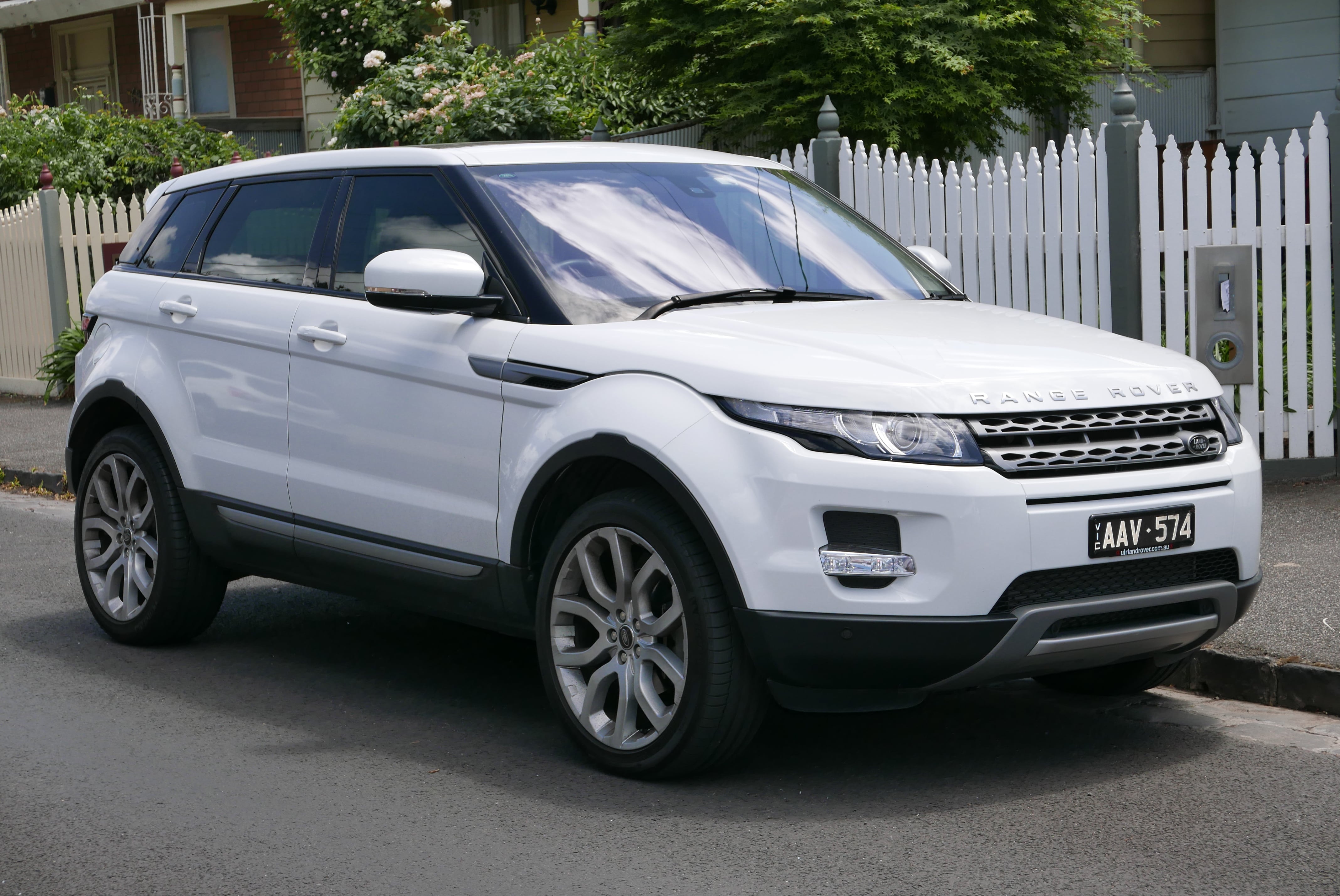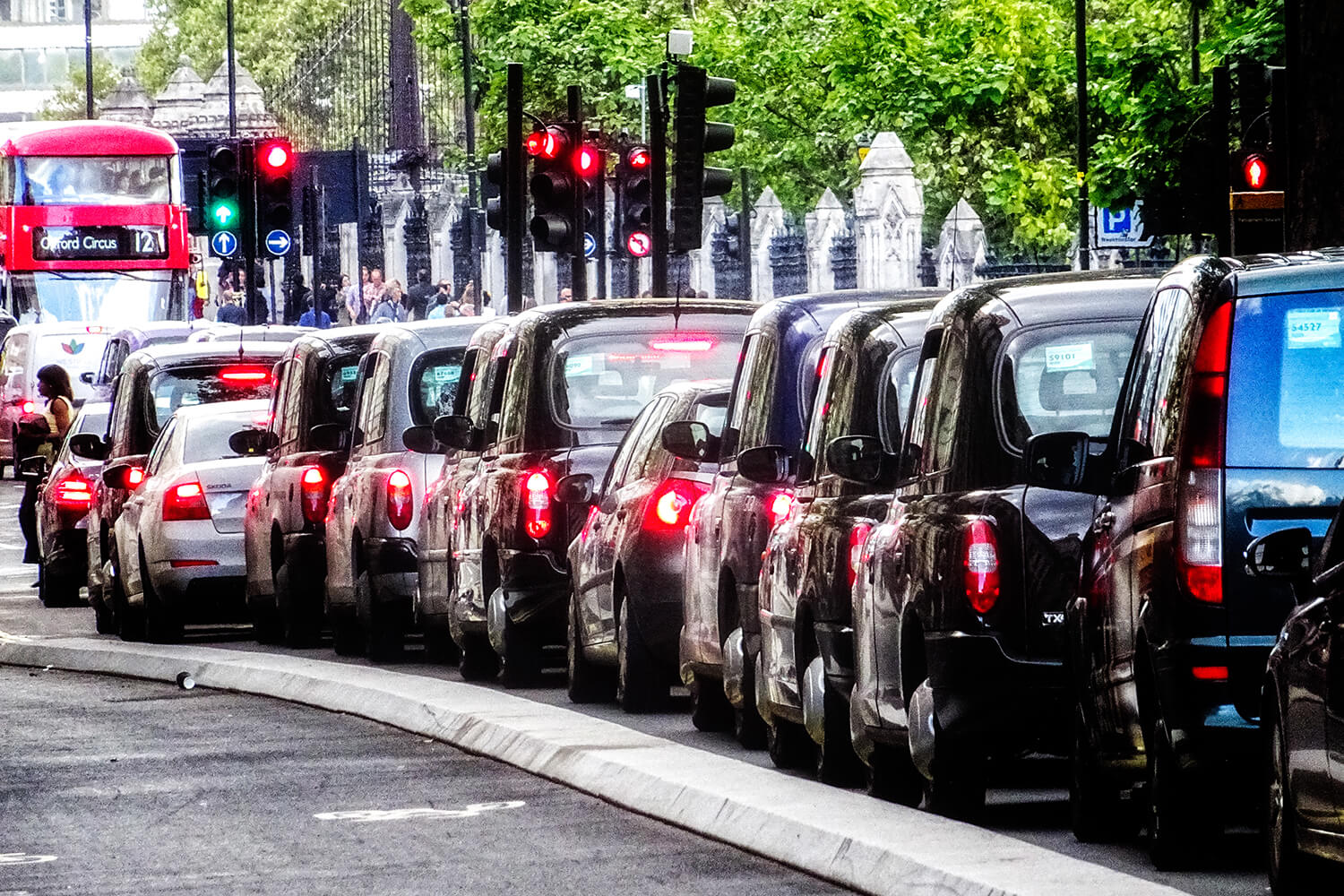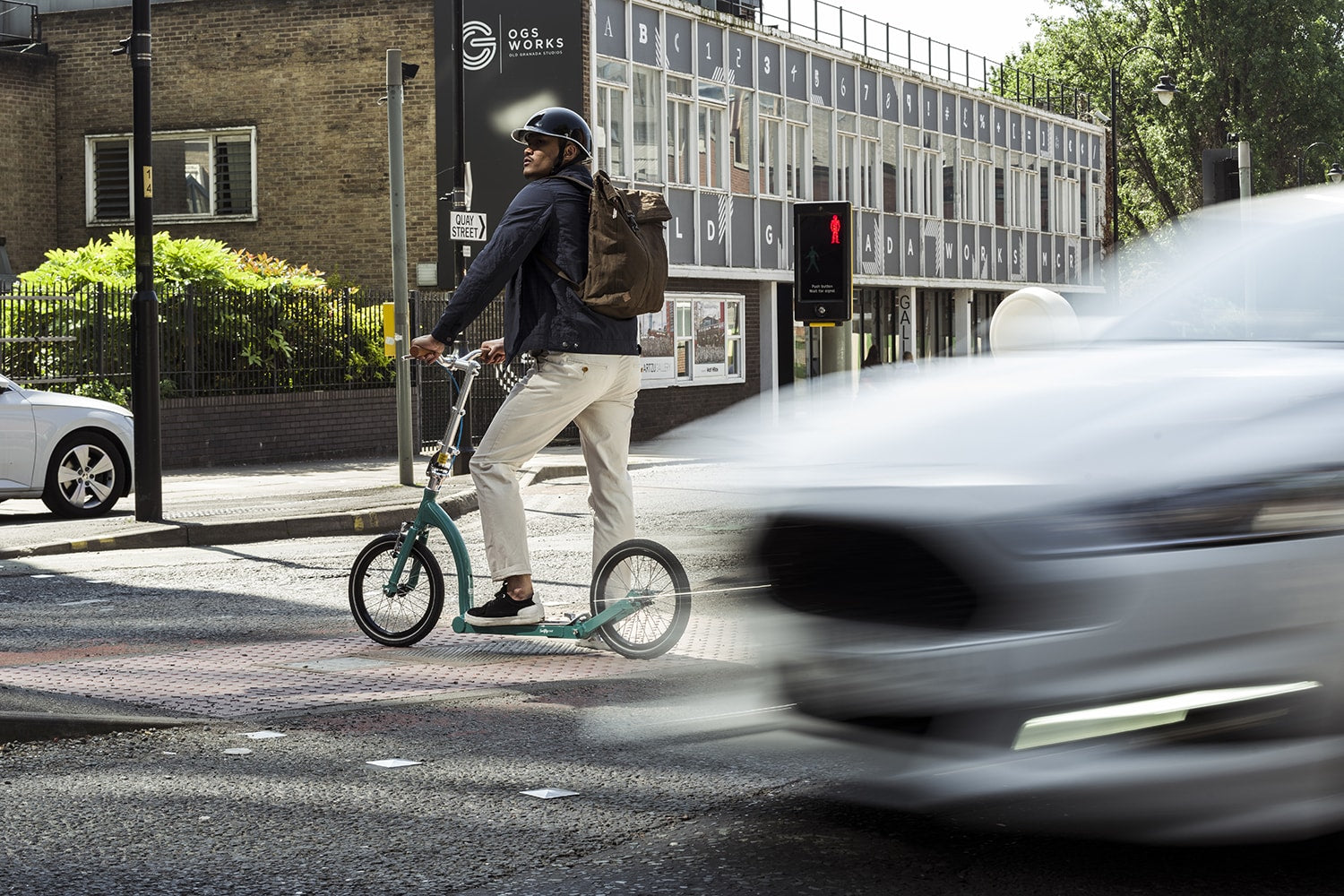
UK Transport CO2: One way to cut your carbon footprint in 2021
The average UK individual’s carbon footprint is about 9 metric tonnes of CO2 per year, according to Climate Stewards.
We have the potential to reduce these carbon emissions dramatically, if only we make some crucial day-to-day changes.
A study by The Department for Transport suggests that over 50% of all car journeys are five miles or less. By focussing on these short trips, we could in theory reduce carbon emissions by up to 27 million tonnes per year [1]. That’s an enormous figure, and that’s in the UK alone.
Short trips are the focus because of the disproportionate number of short distance trips taken by car nationwide. These journeys are not very far, and they’re not very fast.
The size, weight, and performance of cars climbs (DfT), while congested traffic in London city centre crawls at an average speed of 7mph (Independent). See the irony?
We should be taking these short distance trips with vehicles designed for that distance, and that travel at a suitable speed. For this, we’re looking at micromobility solutions.
Read more in the journal: The Micromobility Revolution – what exactly is it?
Scooters work for many trips under five miles, like errands, the school run, and commuting.
But that’s just one option, among other light modes under the ‘micromobility’ category. We can also look at bikes, e-bikes, cargo bikes – the list goes on.
Scooters in particular have recently seen a sharp rise in popularity. Users find them convenient and fun, and they're just a little different. In the US in 2018, there were 84 million shared micromobility trips, and 46% of these trips were by scooter.
So if you’re looking for a carbon offset – an action to compensate for your carbon emissions made elsewhere – a scooter could be one lifestyle change that is positive and easy to implement.
Are scooter trips replacing car trips?
In a recent questionnaire, we discovered that 40% of Swifty customers are substituting car trips for scooters.
That means regardless of the type of journey – commute, leisure, errands, etc. – 40% of our customers are switching at least some of those journeys to more sustainable methods.
While some people use scooters for fun, fitness, and leisure, many more use them for commuting and for running errands. So for many day-to-day trips typically taken by car, a fair few people are now scooting instead.
Look no further than our Trustpilot page for proof. Often people share their stories with us, and often they mention that they used to drive. One customer, Joseph, commutes with his SwiftyONE instead of driving so he can get fit. And on-call firefighter James found his trusty SwiftyAIR invaluable for getting to the station in a hurry.
Co-founder Camilla connects her SwiftyONE with the Metrolink for her daily commute. She said: "It's a classic last-mile scenario. I scoot a mile to the station, fold it to get on the tram, and scoot again when I'm off.
"Where I used to drive 10 miles, instead I can scoot two miles and get the tram the rest of the way."
Any change that helps to reduce greenhouse gas emissions is certainly worthwhile, when you look at the bigger picture.
Read more in the journal: Clean air in cities? Why we need to talk about the 1835 Highway Act
Here’s some food for thought (and I apologise, but this gets a bit mathematical).
We’ve sold around 4,000 scooters since we kicked off eight years ago.
Let’s average that at 500 units per year.
And our study allowed us to conservatively estimate the average customer to scoot ~32 miles per month.
That’s 384 miles per year.
So, 500 customers each scooting 384 miles makes 192,000 miles. That figure can be called 𝑥.
The next year, 500 more customers each scooted 384 miles.
And the previous year’s customers each scooted 384 more miles. So the total that the first 500 customers have scooted over these two years is 2𝑥.
That means the total distance scooted at this stage is 2𝑥+𝑥.
We can extend this calculation for the entire eight years, so it looks like this:
8𝑥+7𝑥+6𝑥+5𝑥+4𝑥+3𝑥+2𝑥+𝑥
If 𝑥=192,000, we can work out that Swifty Scooters so far have a total mileage of approximately 6,912,000 miles.
That’s enough to circumnavigate the world…
…277.6 times.
How much carbon could scooters actually save?
It’s difficult to give a precise calculation, but even a modest 400 miles of scooting per year (compared to the 7,134 miles of an average car user) could make a decent individual dent.
But let’s really theorise for a moment.
There are around 37.9 million cars currently licensed in the UK, as of 2018. The average car’s annual mileage is 7,134 miles. That’s an estimated annual total of 270.4 billion miles.
As mentioned before, over half of all car journeys are five miles or less. Of course, these can’t all be substituted for micromobility. For example, they may be carrying bulky cargo, or the driver may be unable to ride a bike or scooter. So let’s hypothesise that 25% of car journeys can be substituted for micromobility. Seems reasonable, right?
By doing this, we would save a whopping 67.6 billion miles in car journeys.
And it gets better.
An average car in the UK emits approximately 200g of CO2 per mile. So in substituting those 25% of car journeys for sustainable means, car emissions would be reduced by a staggering 13.5 million tonnes per year.
But doesn’t manufacture generate carbon?
MIT graduate Shreya Dave concluded in a 2010 paper that the manufacture of an average bicycle produces around 530lbs (240.4kg) of carbon.
A scooter’s frame is around half the size of a bike’s. It’s also made up of far fewer components. So we’ll theorise that manufacturing a scooter produces half the carbon of a bike (120.2kg).
This article by The Guardian states that manufacture of a basic Citroen C1 produces around 6 tonnes of emissions. That number rises to 17 tonnes for a middle-of-the-road Ford Mondeo, and 35 tonnes for a top-spec Land Rover.

Research suggests that the average European cyclist “emits” 16g in CO2 emissions per kilometre (or 26g per mile). We’ll use the same figure for a scooter rider.
You’ll find “emits” in quotes because the cyclist doesn’t personally exude the carbon. The emissions come instead from production of the food they eat, which generates the energy used to propel them. So on an average European diet, it adds 26g of CO2 per mile ridden.
It’s much the same for walking, though cycling and scooting are actually more efficient. That’s because you can travel further with the same amount of energy.
And as above, a car emits around 200g of CO2 per mile.
Now – and I know we’re using a lot of averages here, but stick with me – the average commute in the UK in 2013/14 was 8.8 miles each way, making a 17.6-mile round trip.
So if you bought a kick-scooter and used it for your commute every weekday for a year (excluding four weeks of holiday), total emissions would be around 0.23 tonnes [2].
If you did the same with a basic hatchback, you’d be looking at 6.845 tonnes [3].
And a fancy Land Rover would produce a devastating 35.845 tonnes [4].

Land Rover Range Rover Evoque by OSX @ Wikimedia
On a mile-by-mile basis, scooting or cycling instead of driving saves on average around 174g CO2 per mile [5].
So to offset the carbon produced in the manufacture of a single Land Rover, you’d need to scoot more than 200,000 miles [6].
And if you remember, we estimate the average customer to travel 384 miles per year.
It’d therefore take almost 521 years for an average individual to offset the emissions produced manufacturing one Land Rover [7].
One must also consider the environmental impact of sourcing fuel; drilling for and transporting it. A scooter’s only emissions after manufacture are the 26g per mile generated by the rider.
Not to mention the hazardous gases that these cars release into the atmosphere. Our air quality at the moment is reaching a critical low point – something needs to change, sharpish.
Read more in the journal: Micromobility: How scooters and bikes can boost your business
Bottom line: yes, the manufacture of a scooter does produce carbon emissions. And yes, riding it does, too. But it’s truly a negligible amount compared to a car.
But how can we make our cities less car-centric?
Just look at other cities like Berlin, Barcelona, and Paris, and you can see that better cycle lanes really do work. The UK has pledged more investment into them, but in many cities this has not come to light just yet.
So more resources on walking and cycling routes, like Manchester’s Bee Network, would be a good start. Ultimately we want to create more space for scooters and cyclists so it's easier for travellers to use these modes.
In busy cities like London, where cars are restricted, scooter-share schemes could replace taxis. They are a problem in such cities, and constitute a massive portion of the day-to-day traffic.
As Tier investor Elmar Broscheit points out in an interview with Euronews, 20% of car-hailing (e.g. Uber) rides are under 3km (1.9 miles). Even substituting only these journeys could make a massive difference.
And Uber are well aware of the shifting landscape. That's why they too are diversifying into micromobility.
Recently they acquired bike-sharing service Jump, and they've unveiled a monthly subscription service offering (among other things) unlimited bike and scooter rides.

London taxi traffic by Garry Knight @ Flickr (https://creativecommons.org/licenses/by/2.0/)
This article by The Independent found that the average driving speed in London is 7mph. A kick-scooter can easily be propelled faster than that. And with an e-scooter, you don’t even have to push.
There are myriad benefits that scooters can bring to our cities. A brilliant article by Wired explores how e-scooters are better for cities than cars, looking at costs, weight, and energy.
Many cities in Europe and America have embraced shared e-bikes and e-scooters as alternatives to driving, and inner-city traffic has vastly improved as a result.
Ultimately, it’s also way more fun than driving. Wave sayonara to road rage and feel the wind in your hair. Cutting down on car usage is one of the most effective ways to reduce your carbon footprint, and using a scooter is a fun and practical way to do so.
Scooters, transport, and your carbon footprint
So, although purchasing and operating a scooter may not be completely carbon-neutral, it is far better than doing the same with a car.
And as we know, scooting isn't simply a fad. Proof is that our scooters have ridden far enough to go around the world 277-and-a-bit times.
There has been in recent years a patent shift away from driving. People are often instead scooting, cycling, or taking a different micromobility mode.
Sustainability is paramount. That's why we take such pride in our quality - our scooters are built to last. A short life cycle means the product needs replacing more often, which is something we want to avoid.
At the end of the day, our scooters – particularly our folding SwiftyONE – are designed to be truly multi-purpose and accessible.
I'm not saying you need to stop driving altogether and scoot everywhere if that's not feasible. A scooter can be complementary. It can be taken on the tram or in your car. Use it as often or as little as you like. What's important is that you do what you can.
Anyway, some 300,000 Land Rovers were sold globally last year. To offset the carbon emitted in manufacturing those Land Rovers, it'd take the average Swifty customer 156 million years. So we'd better get scooting!
--------------
[1] If there are 37.9 million cars currently licensed in the UK, the average car travels 7,134 miles per year and emits 200g CO2 per mile, and 50% of all car journeys are 5 miles or less, i.e. 37,900,000*0.0002(7,134*0.5).
Sources: Department for Transport, The Guardian, Transport & Environment, Department for Transport
[2] Cyclist emissions (26g/mile) multiplied by average annual commute mileage (8.8 miles each way for 240 days) plus scooter manufacture emissions (120.2kg), i.e. (0.000026*4,224)+0.1202.
Sources: Our Streets MPLS, Department for Transport, MIT
[3] Car emissions (200g/mile) multiplied by average annual commute mileage (8.8 miles each way for 240 days) plus Citroen C1 manufacture emissions (6 tonnes), i.e. (0.0002*4,224)+6.
Sources: Transport & Environment, Department for Transport, The Guardian
[4] Car emissions (200g/mile) multiplied by average annual commute mileage (8.8 miles each way for 240 days) plus Land Rover manufacture emissions (6 tonnes), i.e. (0.0002*4,224)+35.
Sources: Transport & Environment, Department for Transport, The Guardian
[5] Difference between CO2 emissions per mile for a car and emissions per mile for a cyclist, i.e. 200g-26g.
Sources: Transport & Environment, Our Streets MPLS
[6] Emissions manufacturing one Land Rover (35 tonnes) divided by difference in emissions, i.e. 35,000,000g/174g.
Sources: The Guardian, Transport & Environment, Our Streets MPLS
[7] Scooter mileage to offset Land Rover emissions divided by average individual annual scooter mileage, i.e. 200,000m/384m.



